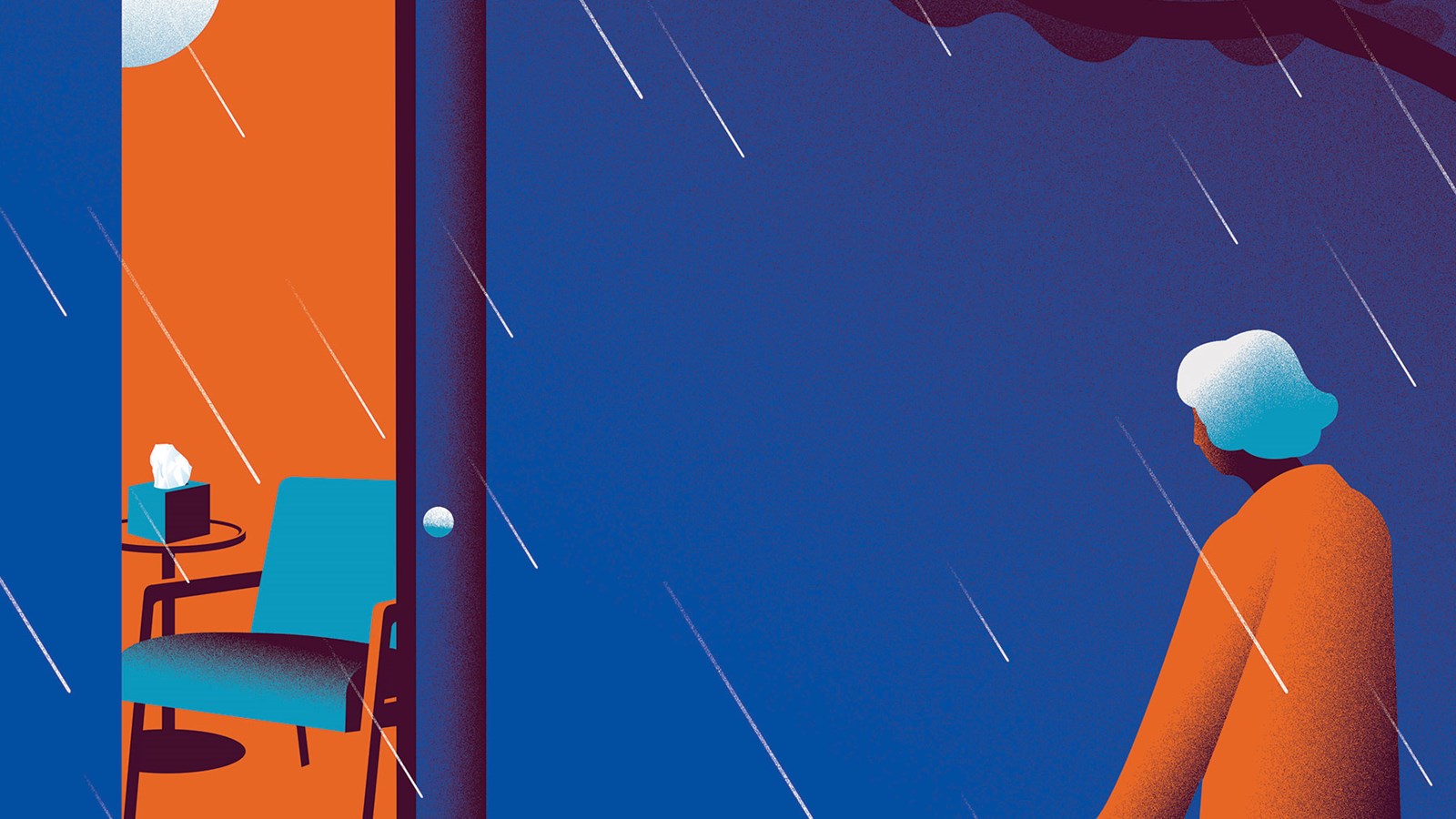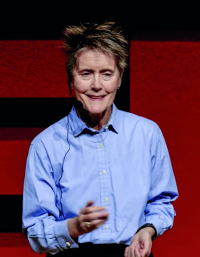
Anne Power
Educating through Instagram and TEDx
When I was a young therapist I had two friends whose therapists died in the middle of their therapy so I knew what a cruel blow that could be. The subject of therapists becoming too unwell or too old for their work was almost taboo then, and that made me curious and led me in my 50s to write a book, Forced Endings in Psychotherapy and Psychoanalysis: attachment and loss in retirement (Routledge). The book explores therapist retirement based on interviews with older therapists who had recently retired or were in the process of closing a private practice.
Having preached the importance of responsible behaviour from older therapists I believe that I owe it to my clients to be particularly mindful about my ageing. I am 67 now, which is three years off the age that I had pencilled lightly for retirement. I think moving to online work may have pushed my plans a little further back, and for the moment I continue working part time, seeing nine couples a week.
I have always thought that I would find it hard to let go. I love feeling I can make a difference in people’s lives, and love the struggle with myself that the work repeatedly throws up – because these struggles bring us learning, and learning is such a deeply rewarding experience. It’s probably a dopamine reward, and it has energised me to seek out new challenges.
Over the past decade I have trained in emotionally focused couple therapy. My increased interest in how attachment strategies play out in couples has helped my clients and also led me to my next project, to interview and write about long-term couples from different traditions, for my book, Contented Couples: magic, logic or luck? (Karnac Books).
The stories of these couples live in me. Almost all had some version of the pursuer- withdrawer fit, where one partner manages anxiety by amplifying feelings, the other by minimising them. The one is experienced as intrusive and the other as inaccessible. And hence the repeating loop – the more one pursues, the more the other withdraws and vice versa. The ‘contented’ couples whom I interviewed had learned to manage this tendency and to reduce their triggers. I feel their combined stories contain a very encouraging message to the world, but I know many people don’t have time to read books, and hence I took this message to Instagram (@and_attachment) and recruited the cast of wooden dolls who play out their domestic dramas from these familiar attachment positions.
The Instagram doll stories give insight into how a secure couple might cope with a misunderstanding, and contrastingly how less secure couples tend to be triggered over tiny mis-steps. I love the scope this medium gives me and have plans for one doll couple (the gay guys) to start work with a couple therapist. Meanwhile, one of the unhappy couples (the white heterosexual couple who are conflict-avoidant) will probably be splitting up. I have a new couple in the wings – they have got together in midlife so they’ll be bringing all the challenges of raising a blended family. And yes, sourcing all their little pots and pans and other accessories is a big part of the fun for me, and when I set up their dolly photo shoots I am also developing my photography skills.
Getting older makes me more aware that, as Stephen Sondheim put it, ‘Opportunity is not a lengthy visitor’. I have learned to welcome the adrenaline and to tolerate the dread that opportunities may bring, such as speaking at a local TEDx event. My motivation to give the talk was huge – I felt this was a chance to bring the understanding of my decades as a therapist, and to gift this to a wider audience by distilling attachment theory into 12 minutes and coaxing it into language that would make sense to someone who had walked in off the street. I hope and believe that my clients are benefitting from these ‘diversions’ because I return to the therapy room with deeper understanding and my curiosity re-energised.
You can watch Anne’s TEDx talk at: https://www.youtube.com/watch?v=9idayJyWCWs
Next in this issue
Anne Power
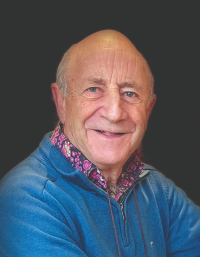
Richard Conradi
Giving back in retirement
I graduated with a diploma in counselling at the age of 80, by far the oldest and one of the few males on my course. When I arrived at my graduation ceremony, arranged by the University of Hertfordshire, I was surprised when a helpful receptionist told me that grandparents of graduands were to go straight into the hall!
I had always been aware of the value of counselling as my younger sister had been a founder in 1978 of The Norwich Centre, one of the first person-centred counselling agencies in the UK, and had welcomed Carl Rogers on one of his visits to the UK. After retiring from a career in electrical engineering at 60, I worked as a volunteer in many helping charities, including The Cancer Counselling Trust, Victim Support’s Witness Service and a local bereavement support charity as a visitor.
Then two younger siblings died from cancer. I found a wonderful counsellor to help me with my grief. Some time later she suggested I consider training to become a counsellor. I thought I was far too old, being then 75! But far from being a barrier, she explained that I had invaluable life experience. Just a few days later, and at my local college, I began a four-year journey of discovery that has changed my life, my relationships and my self-awareness.
In the final part of my diploma course, as a placement I joined Rennie Grove Peace Hospice Care. I am now a qualified counsellor with them, providing support to those with life-limiting illness and to their relatives. This has been one of the most rewarding experiences I have ever had.
I also volunteer for my local authority’s adolescent development team, supporting young people with a wide range of needs. The contrast between working with those at the start of their lives with those at the end has been a revelation. And more recently I am now also counselling those affected by breast cancer, at the charity Future Dreams.
In the ninth decade of my life, I am learning so much from my new career. I am truly grateful that I found a new vocation at this time in my life, and am delighted that my age seems only to enhance the work I am doing.
Richard Conradi
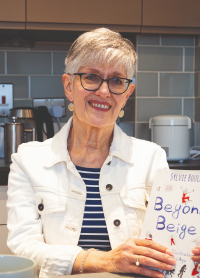
Sylvie Boulay
Communicating with creativity
When I hit my 70s I suddenly entered a different world where I am invisible. The one exception is when kind people offer me a seat on the bus even when I am in full running gear on my way to Parkrun. I feel like a curious observer in a new world, so I started to draw all the sad and funny things that happened in my day-to-day life. I wondered if other women shared the same challenges, but there seemed to be a conspiracy of silence. Women kept a stiff upper lip about ageing.
My ideas just kept pouring out, often in the shape of comic strips. I am not trained as an artist but I was unstoppable. I felt I could not speak for old women in general so I decided to tell my own story of old age. Beyond Beige: a woman’s illustrated story of old age was published earlier this year (Ortus Press).
It wasn’t my first book. I published one shortly after I turned 60 – a self-help manual for people struggling with binge eating, Take Charge of Your Diet: a self-help workbook using cognitive behavioural therapy (Ortus Press). I have struggled with my body image all my life and, ironically, it took a double diagnosis of cancer for me to finally come to terms with it. I was first diagnosed with a rare form of chronic blood cancer and then breast cancer.
Then my daughter announced she was pregnant and I decided to throw caution to the wind – I paused my counselling work to help look after my granddaughter. As much as I have loved it, I still have a passion for therapy and a head full of ideas, so I need some way to express them and to feel I am still contributing to the world in some way – hence writing Beyond Beige. In the past I have worked with children who were bereaved or affected by their parents’ addiction, and loved the visual tools of play therapy, so I used drawings to tell my story. The realities of old age were a shock and I had to describe them in a graphic way, even if it meant learning to draw on an iPad.
I tried the draft on my friends and was amazed by their reactions. Women and some men opened up about their own experiences of old age. I seemed to have accidentally produced a peculiar form of therapy. Some people were shocked and called me a ‘show-off’, which I gratefully accepted as a compliment.
I often wonder if I could go back to counselling when my granddaughter no longer needs me. I would like to work with young people again but I do have fears about my age. Would my clients think I am too old? Would I have the energy to hold their stories? I also dream of doing an illustration course and drawing chalk street art on the pavements, although I would have to draw very quickly before my knees seize up.
I cannot imagine not having a job. Who would I be? What use would I be? One thing is certain, whether I am a student or a therapist or a street artist, I shall always be proud to be an old woman with a loud voice.
Sylvia Boulay
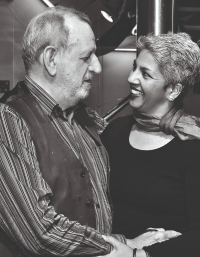
Lina Mookerjee
Catalysing change beyond the therapy room
Although I’m still in my mid-50s I live with the challenges of old age as my husband Richard is 25 years older, and I have now become his carer. Since marrying Richard (also a psychotherapist) in 1999, we always knew that I would eventually become his carer once his sight declined due to retinitis pigmentosa. We’d compensate our anticipatory loss knowing we could always relish hearing each other. However, in 2015 this assumption was shattered when his hearing declined severely, creating a dual disability. This has significantly impacted our relationship. Not only no spontaneous acts of loving connection through shared eye contact, smiles and non-verbal affirmations; now no more easy-flowing conversation – as we can often end up with words lost and missed. These micro-ruptures create disconnections that can leave us feeling cold, distant, abandoned, invisible, hurt and angry – just like I felt as a child, coping alone with my mother’s hypoglycaemic symptoms due to undiagnosed diabetes.
My working world with clients is very different; I engage with a greater visual- auditory relational world. Eye contact, non-verbal communication and listening to clients to affirm presence, even in silence, have become richer as a consequence. I enjoy sharing these moments of encounter, non-verbal experiences and connections that come from mutually being seen and heard. I can feel my potency and effectiveness with clients, which is uplifting and rewarding, especially when there is movement, excitement, discovery and growth. With this comes the assumption that eventually a client’s work ends and they leave. Successful work can feel confusing for me, both rewarding and an abandonment.
My powerlessness to improve his decline is the hardest limitation I face in caring for Richard, as it was for me as a child-carer to my mum. My internal rage flare-ups remind me so, as does the grief-tension that emerges when feeling able to help clients and not my husband. Noticing my somatic symptoms and present-moment awareness as well as sharing my reflections with Richard help to ease our mutual pain. But this isn’t my only way of soothing pain; becoming a public voice of lived experience (as storyteller, media contributor and writer) has been my greatest liberation – it enables me to transform my powerlessness into usefulness. I illuminate taboo areas and challenge beliefs and perceptions that stunt growth while offering alternative insights. Most recently I have shared my lived experience as Richard’s carer on both BBC Radio 4’s Woman’s Hour and ITV’s Tonight programme. Before that I focused on menopause, offering how this can be a woman’s greatest gift for change. Having used my decade-long menopause for my own personal growth, I no longer feel apologetic nor feel the need to conform but instead feel stronger in my resolve to stand out and use what I have learned to catalyse change on a greater scale beyond the confines of the therapy room.
